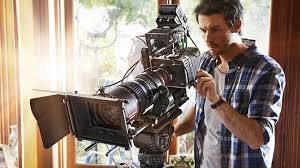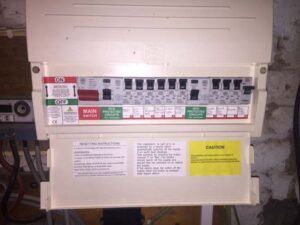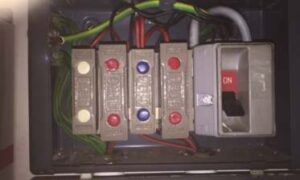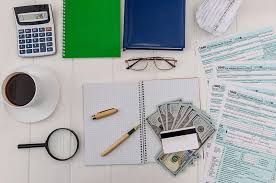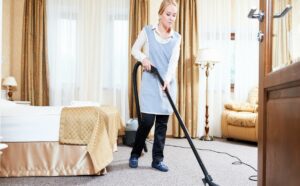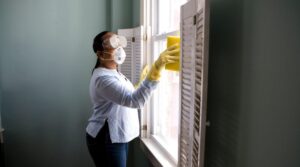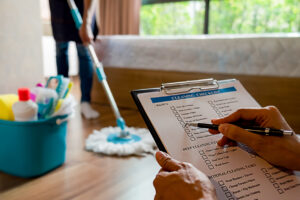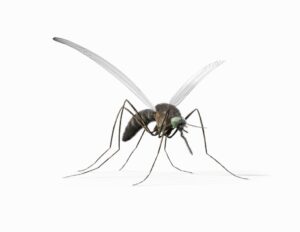Guide to Wood Flooring Maintenance
Maintenance of wood flooring in commercial buildings is vital to have a safe surface for employees and customers while maintaining the beautiful and sophisticated appearance of the floor materials. Facility and building managers will need to have the proper knowledge and training in regards to the type of flooring that they will clean and service. Here is a simple guide to wood floor maintenance that can be used to prolong the lifecycle of the wood materials while offering preventive advice that can be used to minimize damage.
Daily Maintenance
Deciding on the right daily cleaning services will be based on the type of commercial business that is in operation, the outdoor environment and other factors. You may be in charge of a building that experiences a high amount of foot traffic from employees or customers that requires you to perform nightly sweeping of the surface.
The outdoor environment also plays an important factor. If you are in charge of a resort facility near the beach or has pool access, or a golf course where an abundant amount of dirt from shoes will get onto the surface, you may be required to perform multiple cleaning services throughout the day. Select the daily and weekly schedule that is appropriate for the establishment to lessen the amount of dirt, debris and damage the floor undergoes from commercial business activities.
Most flooring in facilities will require sweeping and spot mopping to maintain the luxurious wood surface. Vacuuming is also ideal on a weekly basis to pull up dirt that may get between the seams of the flooring.
Periodic Deep Cleaning
Deep cleaning usually isn’t recommended on a daily basis. The constant use of cleaners and equipment can quickly strip the finish off the surface, causing the wood floor to become more exposed to dirt, debris and moisture. Only perform periodic deep cleaning on a monthly basis to keep up the eye-pleasing beauty of the wood surface.
Never use any type of harsh cleaners that are recommended for other floor materials such as vinyl or tile. Always consult the wood flooring manufacturer’s instructions in regards to the right cleaning products to use that will not strip the finish from the floor or cause unnecessary wax build-up. Look for hardwood floor cleaners that are specifically designed for wood floors that have a polyurethane finish and contain a low-VOC formula to help with the interior air quality of the commercial establishment.
There are many tools and equipment that can be used to perform periodic deep cleanings such as auto scrubbers, commercial mops and buffers. Always inspect any flooring equipment before use to ensure there are no problems that may end up scratching or marring the surface of the wood floors.
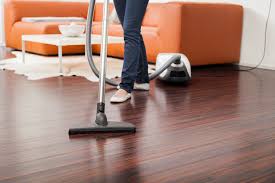
Hardwood floor maintenance is simple.
Hardwood floors will last 25 years between sandings, if they are well-maintained.
Here are 5 tips to help your floors stay in tip-top shape.
- Sweep and vacuum your hardwood floors like crazy.
Here in Minnesota, we track all manner of grit, gravel and salt onto our floors. The photo at right in one sweeping of the shop floor on one typical day in January. These particles are abrasive, just like the grit on sandpaper.
Your weight on top of those abrasive particles turns you into a sanding machine that will grind down the finish on your floor as effectively as any floor sander – so get that grit off that floor regularly and often.
- Never, ever steam clean or wet-mop a wood floor. Ever.
Those long-stick squeeze mops just don’t wring out the mop head thoroughly enough, and even small amounts of water can cause your floor to swell and cup over time.
Now, for all you strong, old-fashioned types out there, getting on your hands and knees and washing the floor with a carefully squeezed-out conventional sponge is usually not a hazard to your floor, but we feel bad making your clean your floors that way.
- Never wax a polyurethane floor!
You’re looking at your polyurethaned hardwood floor and thinking that it looks dull and dingy and just needs to be polished up a bit. Don’t try it.
Polyurethane is simply plastic and buffing it will just dull it further and laying down a layer of wax will prevent you topcoating with more polyurethane, which is the correct way to restore sheen to your polyurethane floor.
- Use rugs.
Place mats at exterior doors to trap sand and grit that arrives with incoming traffic. Use area rugs in high traffic areas and spots where you pivot, like the base of stairwells.
- Be careful about rug underlayments.
rug check plusMany people like to use a separate backing under their carpets to add cushion and keep them from slipping.
But synthetic rubber and polyurethane rug backing can react with the plastic in polyurethane floors and discolor and degrade it; natural latex or rubber underlayments will not. But the problem is, manufacturers are not very good about listing the components in their rug underlayments.
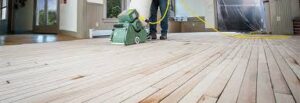
How to Clean Hardwood Floors
Learn how to care for hardwood floors by using these natural cleaners and following these simple tips.
Hardwood floors bring an earthy, warm beauty to your home. They’re durable and, with proper care, last for decades. You can keep them looking lovely by following these tips on how to clean hardwood floors.
The first step: Use a dust mop or vacuum to remove dirt, dust, pet hair and other debris that could scratch the floor. Don’t use a vacuum with a beater bar attachment as it could damage the surface of the floor. Use the floor-brush attachment. Depending on traffic and the number of pets and children you have, you’ll need to do this at least once a week.
Dust mopping won’t remove the dirt and grime that build up over time. For periodic deep cleaning, you’ll need to use a liquid cleaner. You can use a commercial wood-cleaning product, like Bona or Murphy’s Oil Soap. Be sure to follow manufacturer’s instructions. You can also make your own cleaner by mixing one part vinegar to 10 parts warm water. Add a few drops of liquid Castile soap.
Whatever cleaner you choose, the process for how to clean wood floors and how to clean engineered hardwood floors is the same. Saturate a rag or sponge mop in your cleaning solution. Wring it out thoroughly so the mop is damp, not wet. Mop the floor with the cleaner, being careful to not put too much liquid on the floor. Rinse the mop with clean water, wring out excess, and damp mop the floor to remove the cleaner. Wipe up excess water with a clean, dry towel because standing water will damage the floor.
You can also use boiling water and two teabags to clean hardwood floors. The tannic acid in tea creates a beautiful shine. Let two teabags steep in the boiling water for a few minutes. Pour the tea into a bucket. Take a soft cloth and wring it out in the tea. The cloth merely needs to be damp, not soaked. This will enable the floor to dry quickly. Wash the floor and be ready to be amazed by the sheen.
Covering scratches that remain after cleaning is part of knowing how to clean a wood floor. Take a crayon the color of the floor and rub it on the scratch to fill the gap. Turn a blow dryer on high, heat the area where the crayon was applied and buff it with a soft cloth.
Prevent dirt and damage to your newly cleaned floors. Put doormats inside and outside exterior doors to cut down on the dirt and moisture tracked in. Avoid scratches by using floor protectors under furniture and putting down rugs in high-traffic areas. Knowing how to clean a wood floor will keep yours looking beautiful for years.

Think You’re Up to DIYing It? Some Tips to Help
Test it. Pick a discrete spot to test your process before you ruin your entire living room. Some chemical- or oil-based cleaning products leave a nasty, nearly-invisible residue, which might bubble to the surface once you start to seal the planks. If anything looks odd during testing, strip your floors using a mixture of ammonia and water, or use a commercial hardwood cleaner.
Skip the stain. Keep your wood natural, then finish it with a water-based polyurethane instead.
The water-based finish dries quickly, which is a plus. It does mean you’ll need to work fast, though, he says. It can start feeling dry to the touch in as little as 15 minutes. If you don’t work quickly, you risk visible overlapping strokes on the finished floor. Not a deal-breaker, but it will look amateurish.
Take your time. Refinishing your floor can take a week or more. A lot of that time will be spent, well, watching paint dry. Pros will let you know how long to stay away and help you seal up the room, but doing it yourself means you’re on your own. It’s best to wait at least 24 hours before touching the floor after each coat of polyurethane, even if it feels dry.
Wear socks — just socks. Shoes, bare feet, and pets can easily ruin all your hard work. So make sure to wear socks during the entire process and for the first 48 hours after the floor is done. In fact, your socks will help buff the floor! Sock race, anyone?
What Are The Steps To Refinishing Hardwood Floors?
Read these 6 steps for refinishing the wood floors in your home:
- Clean the Floor with a Hardwood Floor Cleaner
- Remove all the furniture, and spray the floor with a hardwood flooring cleaner or your own mix of 10 parts water to 1 part white vinegar.
- Gently wipe the floor with a terry-cloth mop or a towel wrapped around a mop head.
- Close the windows and doors to keep dust contained in the room you’re sanding.
- Prep the Perimeter
- Using 180-grit sandpaper, hand-sand the perimeter of the room and any nooks that the buffer can’t reach.
- Rub with the grain 4 to 6 inches out from the baseboard, working over each board until the finish dulls and a powder forms.
Pro Tip: Don’t use a sanding block for refinishing hardwood—it might miss uneven spots in the floor.
- Scuff-sand the Floor Finishing
- Stick a maroon buffing pad to the buffer, and put on a dust mask.
- Move the buffer from side to side across the floor in the direction of the grain, overlapping each course by 6 inches.
- The old finish turns to powder as you go, so it’s easy to see the areas you’ve covered.
- Keep the buffer moving at all times, but stop every 5 minutes or so and vacuum the pad.
- Vacuum and Tack
- Leave the room for 10 to 15 minutes to let the powder settle.
- Put a clean filter in the vacuum, and sweep the floor using a felt-bottomed attachment.
- Work in line with the flooring strips, then sweep across them to get any powder that settled between the boards.
- Finally, dry-tack the floor with a microfiber cloth pushed with the grain.
- Cut in Along the Edges
- Cover your shoes with booties and your nose and mouth with a respirator that has organic vapor canisters.
- Strain the finish through a cone filter into a clean plastic watering can, minus a sprinkler head, then pour some strained finish into a small plastic container.
- Brush a 3-inch-wide stripe beside the baseboards at a point farthest from your exit door.
- You’ll have lap marks if the edge of the stripe starts to dry, so stop after 10 minutes and go to the next step.
- Roll Out the Poly
- Pour out a 1-inch-wide stripe of finish in line with the grain—only as much as you can spread in 10 minutes.
- Using a long-handled roller with a ¼-inch nap cover, roll out the finish with the grain, then across it.
- Overlap each pass and work quickly to keep a wet edge.
- After 10 minutes, brush more finish along the edge, then pour and roll again for 10 minutes. Continue until the floor is covered.
- Wait 3 hours before recoating and a week before putting back furniture.

